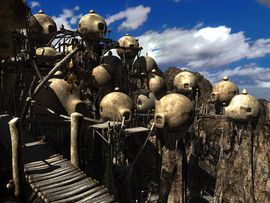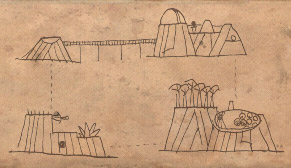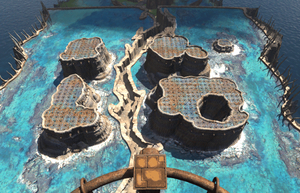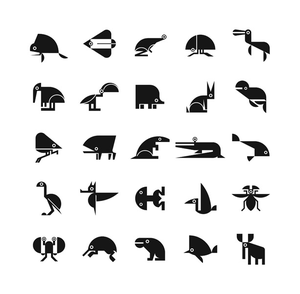Riven
| This article is a stub. You can help the Archive by expanding it. |
This article may be in need of reorganization to comply with the Archive's layout guidelines. |
 | |
| Author | Gehn |
|---|---|
| Connections | Age 233, Tay, the Cleft |
Riven was the fifth Age written by Gehn. Like his other ages, he did not name the age and generally referred to it by number: Age 5. Despite Gehn's sloppiness as a Writer, Riven was probably one of the more stable Ages he wrote. Gehn was unusually devoted to this Age and its well-being, in contrast to his callous disregard for his other Ages and their inhabitants. This may have been because Gehn maintained a number of very powerful misconceptions about the power of the number five, especially as it pertained to D'ni culture. Nonetheless, every Age Gehn wrote had fatal flaws in their writing, leaving them ultimately unstable, and Riven was no exception. Despite appearing stable, Riven was actually in a steady state of decline. Gehn had attempted to convince his son Atrus to fix the Age's instabilities for him, but ultimately his plan backfired. Atrus managed to trap Gehn there for 33 years, keeping him from writing and affecting more Ages.
Riven's inhabitants ended up splitting two factions: those who followed Gehn and those in rebellion against him, the Moiety. Atrus wrote several improvements into the Age, but it was only a matter of time before Riven collapsed completely. Riven's total and utter collapse happened after an unnamed friend of Atrus's had trapped Gehn and freed Atrus's wife Catherine, who had been trapped there. After all of the villagers had been safely moved to Tay, Atrus's friend opened the Star Fissure, which signaled Atrus but also triggered Riven's final collapse. Riven's dead Descriptive Book was kept in Atrus' study in Tomahna until the return of Saavedro; after the fire in the study, its condition and whereabouts are unknown.
Appearance
Riven had a tropical island climate. Originally it contained a single large island with sandy lagoons, large thick palm trees dotting the coasts, and a lush jungle in the island's interior. One tree grew much taller than all the rest, and was known as Riven's Great Tree. There is evidence that Riven paid host to a large variety of animal species as well. However, as the age continued to deteriorate, the island split into five separate islands, and many of these animal species went extinct or became scarce. Gehn also cut down much of the jungle in order to make books, and devastated much of the natural beauty of the Age with his own structures and machinery.
The Islands

Temple Island was the site of Gehn's Temple, and contained the original link-in point for Riven. The most prominent feature on this island however was the Golden Dome, which generated power for Gehn's faulty linking books. Temple Island was the site of the final battle between Atrus and Gehn, and was where the Star Fissure could be found. The Rivenese villagers called the island Allapo or "water pool", and to the Moiety called it Allatwan or "pool of stars")
Jungle Island was the one island that belonged to the Rivenese population after Gehn claimed the other islands for himself. The Rivenese village was located around a lake, along with a schoolhouse and a gallows that Gehn used to exert his power over the villagers. Also on the island was a lush jungle, and a sandy lagoon.
Book Assembly Island (also known as Crater Island or Boiler Island) appeared to be an extinct or dormant volcano. A sulphur-rich lake at the center provided power for the various components of Gehn's bookmaking infrastructure. Gehn built his lab on this island, from which he carried out his bookmaking experiments, and studied the properties of the Age he was trapped on.
Survey Island or Plateau Island, arguably the most menacing of the five islands, was the island from which Gehn watched and surveyed the rest of the age. Here he kept various Wahrks as pets, and monitored Jungle Island's lake and Prison Island's prison. The design of the island appears to have been intended to reinforce the notion of Gehn's power and godhood, as evidenced by the rows of Wahrk tusks, and the monumental Wahrk Throne Room found on the lower level.
Prison Island was the smallest of the five islands, and formally the site of Riven's Great Tree. By the time of Riven's collapse, Prison Island had drifted so far away that it could not be seen from the other islands, and it could only be accessed via linking book. Gehn built a prison cell atop the stump of the Great Tree, and it was here that he imprisoned Catherine.
Plant life
Riven was home to a lush tropical jungle in which a number of plant species thrived. The jungle was comprised of large thick trunked trees which covered the sky with yellow leaves. The coverage of leaves was so thick that most of the jungle floor was dark. In the shadow of the trees grew a variety of ferns, lichens, and large fungi including large brown mushrooms and blue phosphorescent mushrooms. Large blades of grass, about 15 feet tall or so also dotted the edges of the jungle. Pools of water lined the jungle floor at parts, which glowed bright cyan, possibly due to some variety of bioluminescent algae. It is known that the Rivenese villagers ate fruit harvested from the brown mushrooms.
The trees of the jungle were very large, but also rather short compared to the thickness of their trunks. They had thick brown bark that covered about sixth of their trunks, after which their trunks seemed bare, or else covered in a lighter-colored bark. Their branches reached outwards all at about the same height, and produced thick yellow leaves. Many of these trees were cut down by Gehn in order to produce books. The Great Tree which was once on Prison Island was probably similar to these trees, only significantly bigger.
In the lake on Jungle Island, a variety of underwater vegetation could be found including colorful lichen, algae, and seaweed. These aquatic plants seemed to be perfectly adapted to Riven's atypical water.
Large rounded palm trees also dotted the coasts of the islands. They were most prominently found in the Lagoon and Temple Island.
Animal life
The symbols on the standing stones used to access Tay suggest that Riven was host to a wide array of creatures. However, only a few of these have been seen. It's likely that many of these animals had gone extinct by the time of Riven's collapse.
The Wahrk was a large fish that held a great importance to the Rivenese. Before the arrival of Gehn, they respected and feared the Wahrk, as it was the most powerful force they knew. Gehn took advantage of their reverence for the fish by co-opting its likeness to use as an instrument of terror.
The Rivenese subsisted mainly on fish, and meat from Sunners, an aquatic mammal that were hunted nearly to extinction. Ytrams were poisonous frogs that the Moiety used to make poison darts. Scarab beetles could be found in the jungle, and were likely similar to beetles found in other D'ni ages, as they were an ingredient of the ink used to write books.
Water
The water of Riven exhibited strange properties due to, according to Gehn's premature studies, a small, unicellular bacterium residing within it. The bacteria seemed averse to higher temperatures, and so the water could be shifted and molded according to well-placed heat sources (as it was used for the 3-dimensional island maps on Survey Island) or boiled to become potable. Digesting Riven's water in its natural, unboiled state results in choking and stomach trouble, and so the Rivenese villagers developed a powder to neutralize the effect.
Transportation
The original composition of the Age allowed inhabitants to merely cross the entire big island merely by foot. Later, as the five segments started drifting away from each other, in to their own smaller islands, connecting bridges were created (most notably the East Path),[1] but as the drifting continued became clear that a more flexible means was necessitated.
This led to the construction of the maglev system, a set of trams and stations, with only cabling (which was flexible, and easily replaceable) needed for connection.
Gehn's influence
Having grown up during the fall of D'ni, Gehn was obsessed with the concept of reviving its traditions and practices no matter the cost. Because of this, several of Gehn's ages, including his Thirty-Seventh Age and Riven, were used as training grounds to teach book-worlders the Art. Gehn had already established the skeleton of a 'Guild of Writers' on Riven, teaching Rivenese natives (most notably Catherine) how to write in D'ni and construct Ages of their own.
During the battle with Atrus, Catherine wrote five giant daggers into the Age which fell on the island and remained ever since (one fell on Gehn's temple). The shape of the one found near the Star Fissure was adopted by the Moiety as their symbol. Other daggers could be found in the Jungle and the Plateau Island. Upon being banished to Riven by his own son, Gehn proceeded to take his place as a god amongst the Rivenese people and began shaping and constructing the age to his own liking. While he was successful in achieving a position of godly power, he managed it only by way of terror and brute force. Petroglyphs and inscriptions around the age give evidence of this.
Riven's collapse
Among the numerous instabilities of Riven were "the structure of the tectonic plates beneath the planet's crust, the type and strength of the oceanic currents, fluctuations in gravitational fields, and the composition of the crust..."[2] The world's moon was also in a low enough orbit that great tides would eventually drown the island, and in the long run the two bodies would collide. The most severe flaws were corrected by Atrus temporarily, but his fixes began to fail around the time of Catherine's return and captivity.
The final demise of Riven came about upon the reopening of the star fissure. Atrus had been keeping the Age together with his writing and let it die when the people of Riven were evacuated to Tay. The Age began to collapse at last, exacerbated by the fissure's pull.
Remnants of Riven can be found near the Cleft, having fallen through the Star Fissure.
External links
- Calyxa's Cartography, with detailed maps of the islands of Riven.
- Another map of Riven that came with Prima's Secrets of the Games' Riven: Strategy Guide (1997).
References
- ↑ RAWA, "What happened to the East Path?", The Pages of RAWA, accessed on December 1, 2019.
- ↑ Book of Atrus, chapter 21, paperback edition p. 352–353


